The Champions League Final 2023/2024 between Borussia Dortmund and Real Madrid was a thrilling showcase of tactical brilliance, where two of Europe’s finest teams battled for the ultimate glory. In this article, we delve into the strategic intricacies that defined the match, dissecting the formations, key player movements, and game-changing decisions made by both sides. Join us as we unravel the tactical chess match that unfolded on football’s grandest stage, offering insights into the strategies that shaped this unforgettable encounter.
Real Madrid Build-up
Ancelotti’s Real Madrid would patiently break down Dortmund’s defenses, looking for the optimal moment to unlock the Dortmund lines. This possession-focused approach allowed them to control the game’s rhythm while wearing the Dortmund players down, giving Ancelotti’s team more energy later in the game. This was an important aspect that partly decided the game.
Low Build-up
Real Madrid used a 1-4-2-4 formation in the low build-up, with Valverde and Bellingham playing as number-tens and Vinicius Junior and Rodrygo playing high and wide out on the wing.
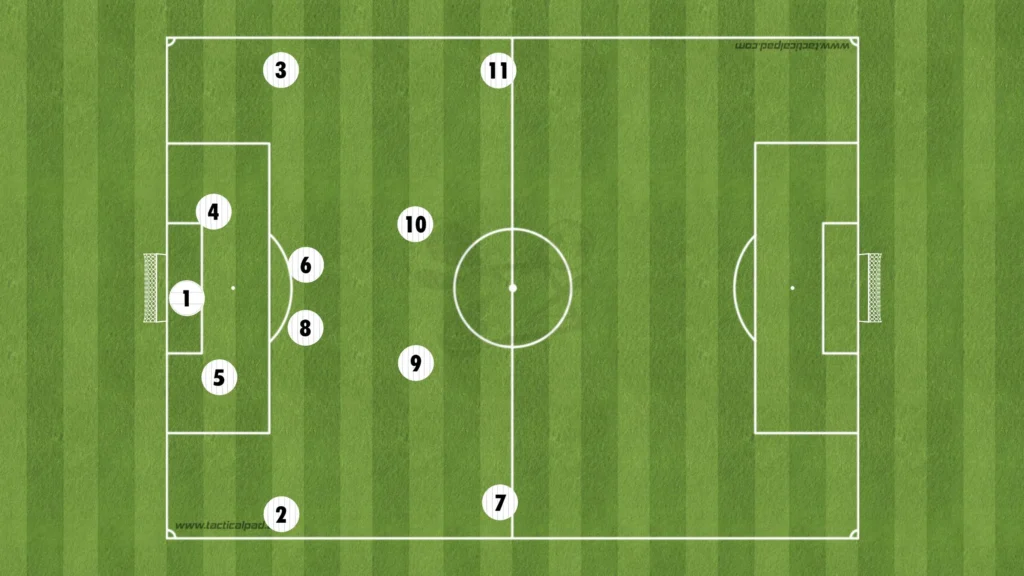
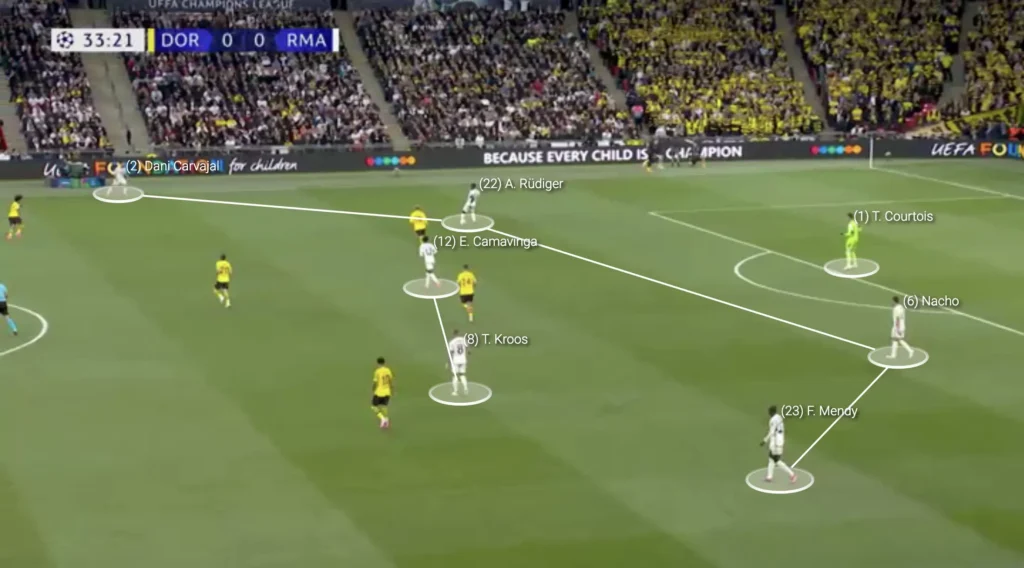
The aim was to make the Dortmund center-backs push up on Valverde and Bellingham to open the space in behind for Vinicius and Rodrygo. Dortmund would, however, rarely press Real Madrid high up, which meant that Real easily could progress into the high build-up.
High Build-up
In the high build-up, Real Madrid would rotate into a 1-2-3-5 formation. They would primarily do this by pushing Carvajal up on the wing and bringing Ferland Mendy into the midfield. Vinicius Junior would play out on the left and Bellingham, Rodrygo, and Valverde were in the center behind Dortmund’s midfield. The Real players were, however, very fluid, and the players often switched positions, creating questions and confusion for the Dortmund players.
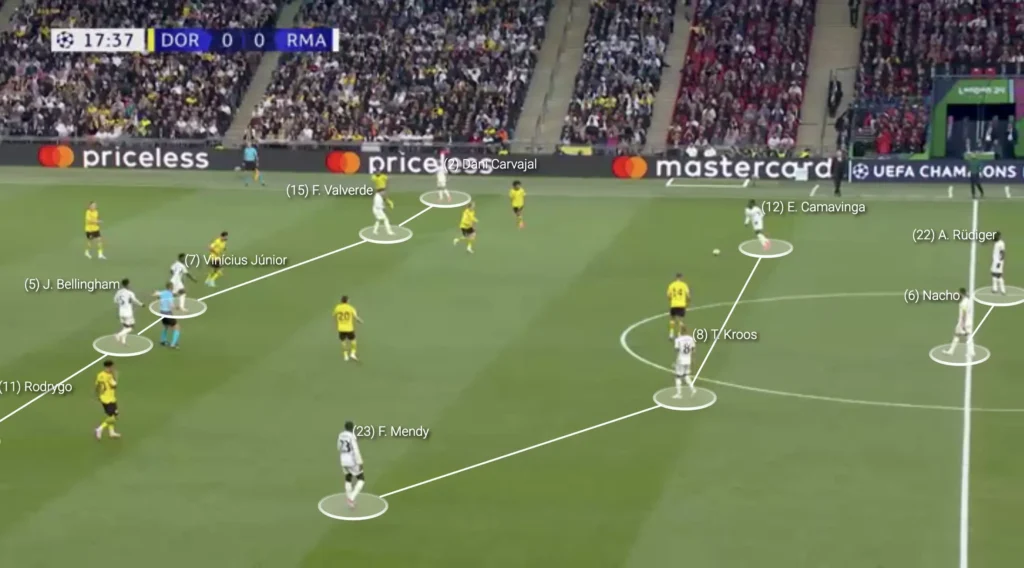
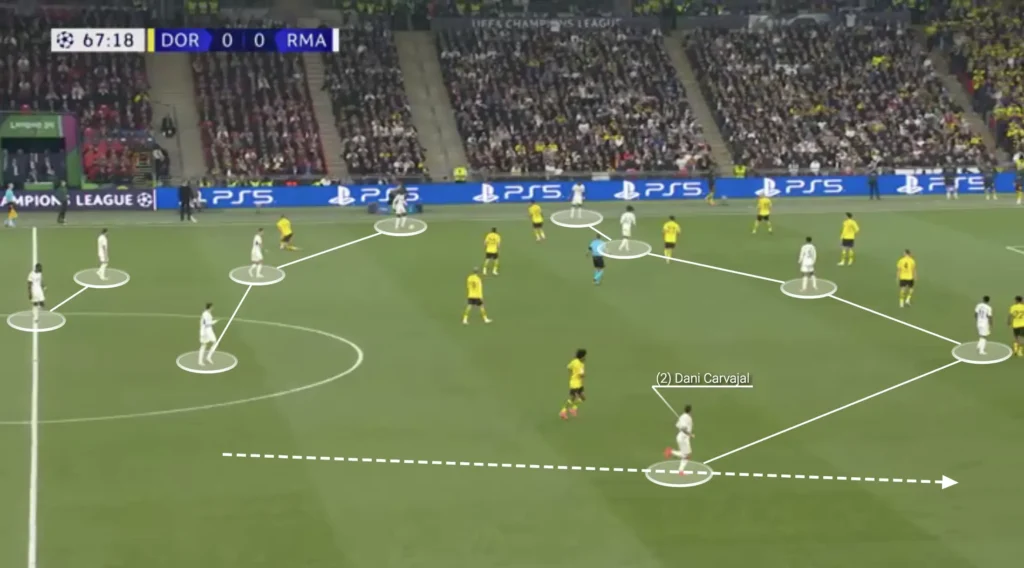
Kroos often dropped down into the backline during the build-up phase, creating a back-three. This allows him to get more time on the ball, which enables him to find long passes out to the wingers or in behind the opposition backline. At the beginning of the game, Kroos found a lot of dangerous passes through dropping down and receiving the ball, which caused many issues for Dortmund.
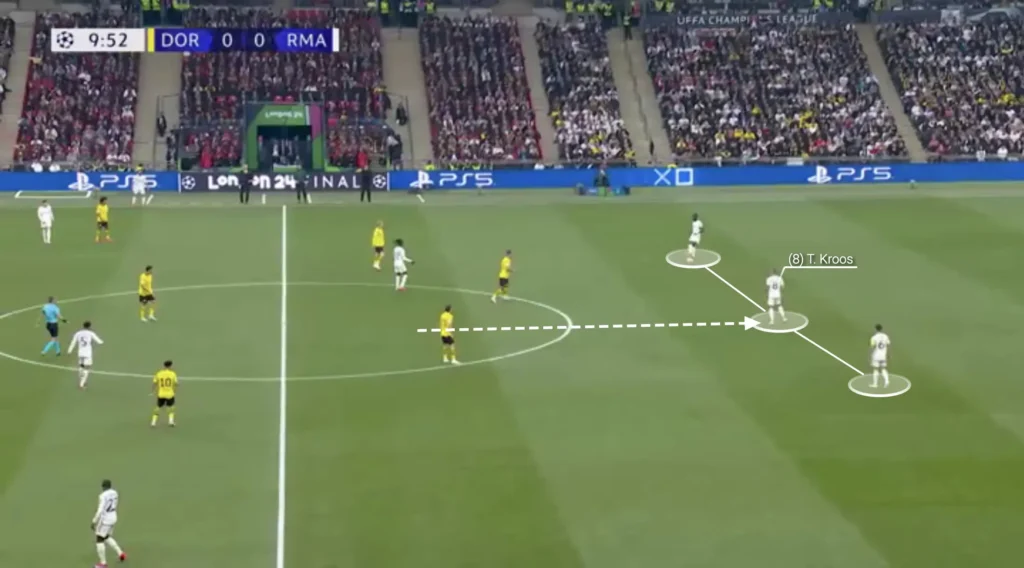
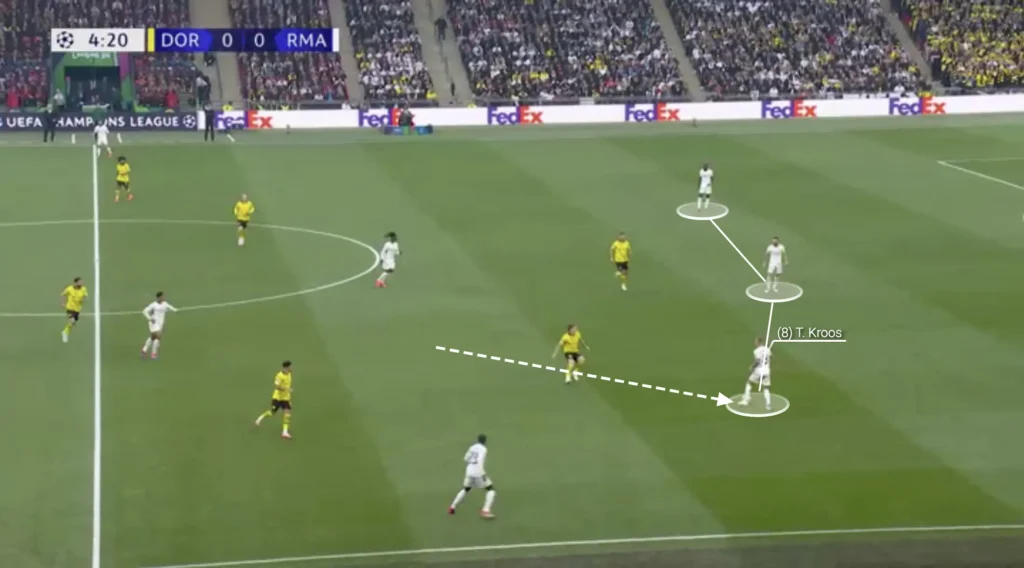
Vinicius Junior had an advantage 1v1 against Ryerson on the wing. He was faster and would almost win every 1v1 duel that they had. Real created many of their chances through Vinicius going past Ryerson and crossing the ball into the box. Real could have scored one or two goals from this with a bit more sharpness in front of goal.
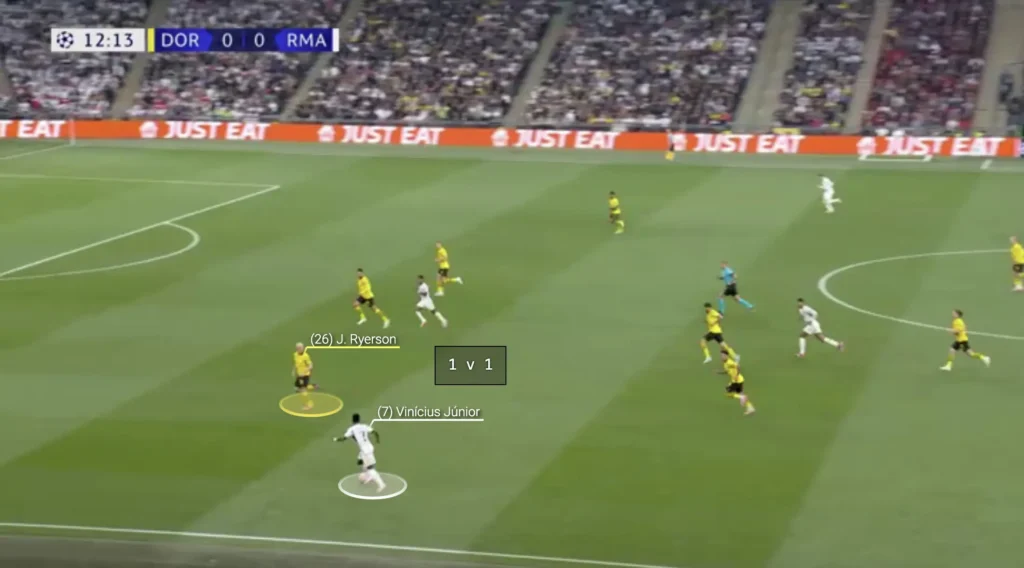
In the second half, Carvajal would come inside more and Rodrygo went out on the wing, which allowed Rodrygo to attack Maatsen in 1v1 situations. Like Vinicius, he often beat his defender to get past the Dortmund backline, which created even more chances.
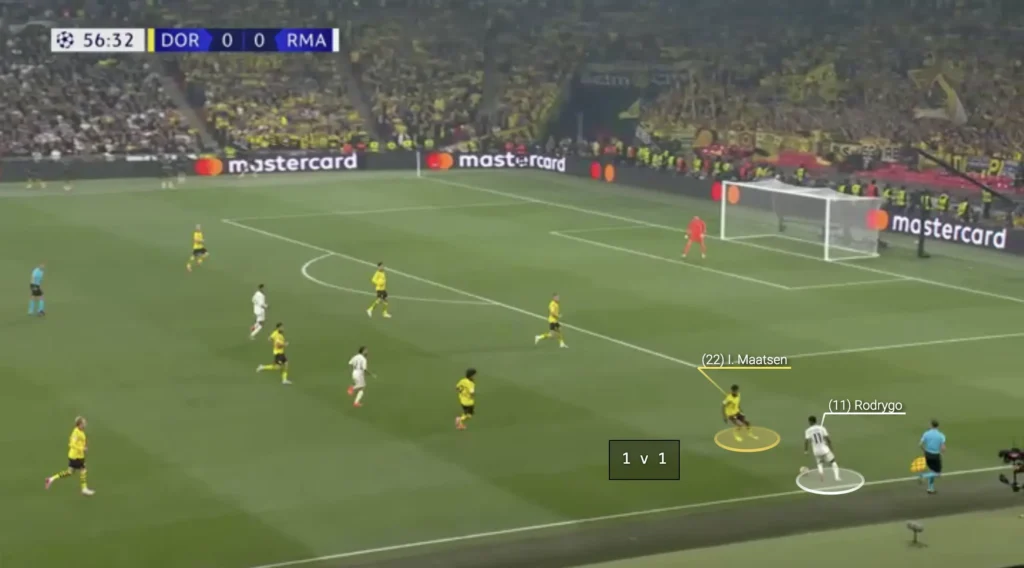
Corners
Real were very dangerous from corners, scoring once and creating many good chances from it. They started with the strong heading players at the back post and then ran at the front post. The ball would be crossed to the front post, where the Real players often would be first and head the ball towards the goal.
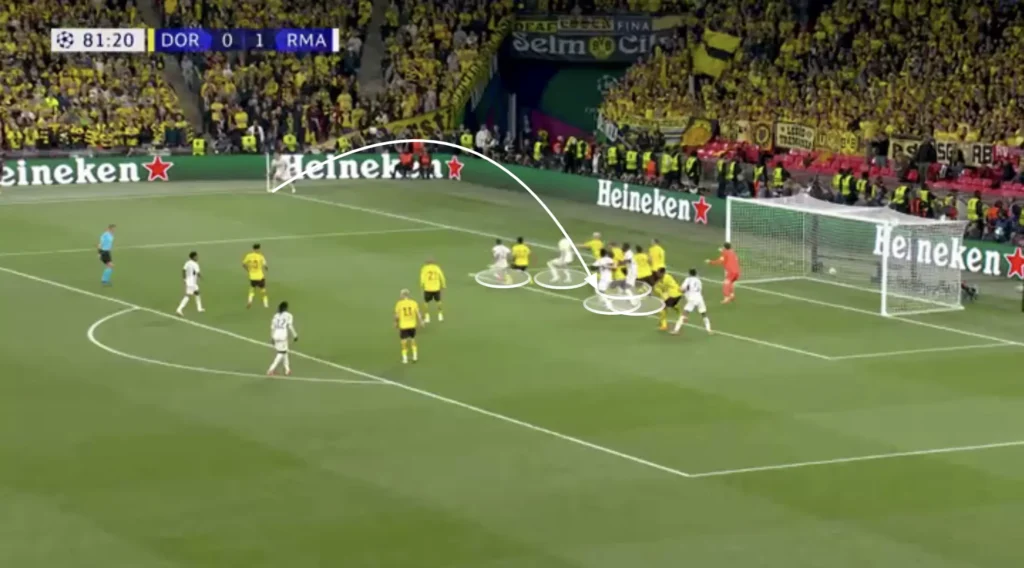
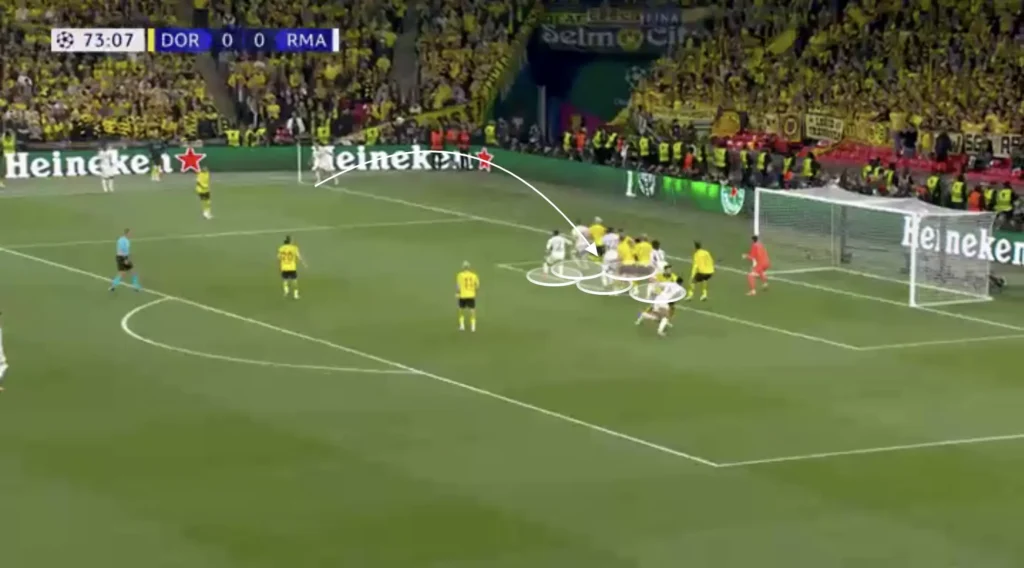
Dortmund Defending
Dortmund defended in a 1-4-5-1 formation during the game. The midfield five would be very compact, trying to close the midfield and stop Real Madrid’s technical midfielder from running the game.
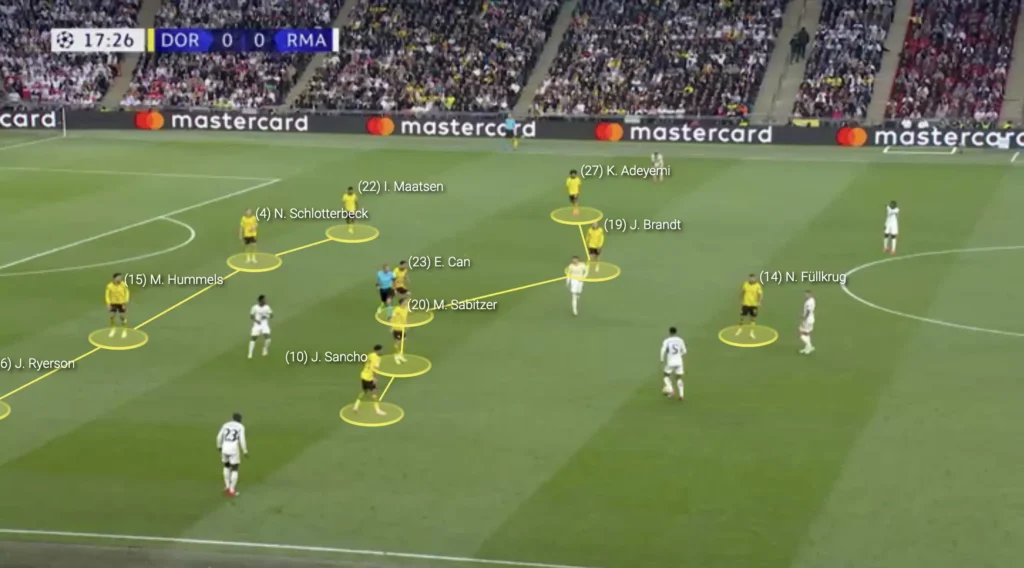
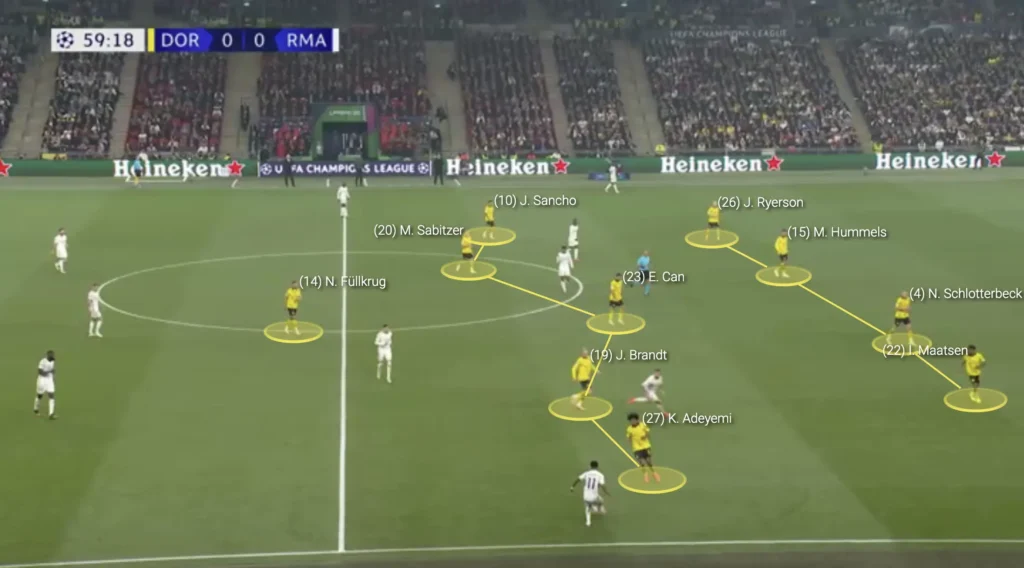
When Kroos dropped into the Real backline, Sabitzer always pushed up to immediately put pressure on him. Kroos is an amazing player when he has time on the ball and will find incredible passes to open up opposition defenses. With Sabitzer pushing up, he had less time on the ball and could not run the game as easily. Dortmund would also successfully close the space that Sabitzer opened when he pushed up. Sancho came in and Emre Can came across, which did not allow Real to find the space that Sabitzer left.
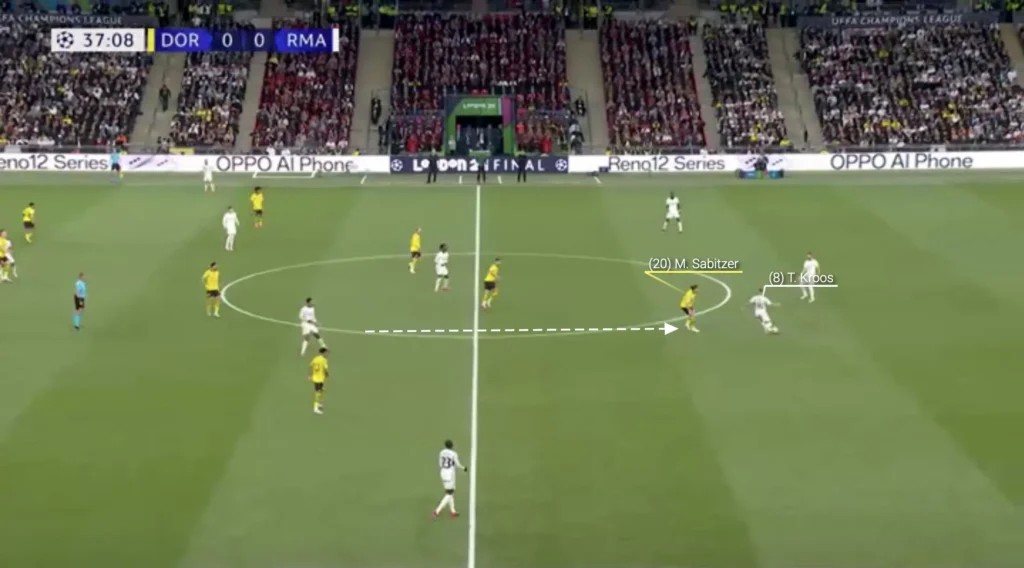
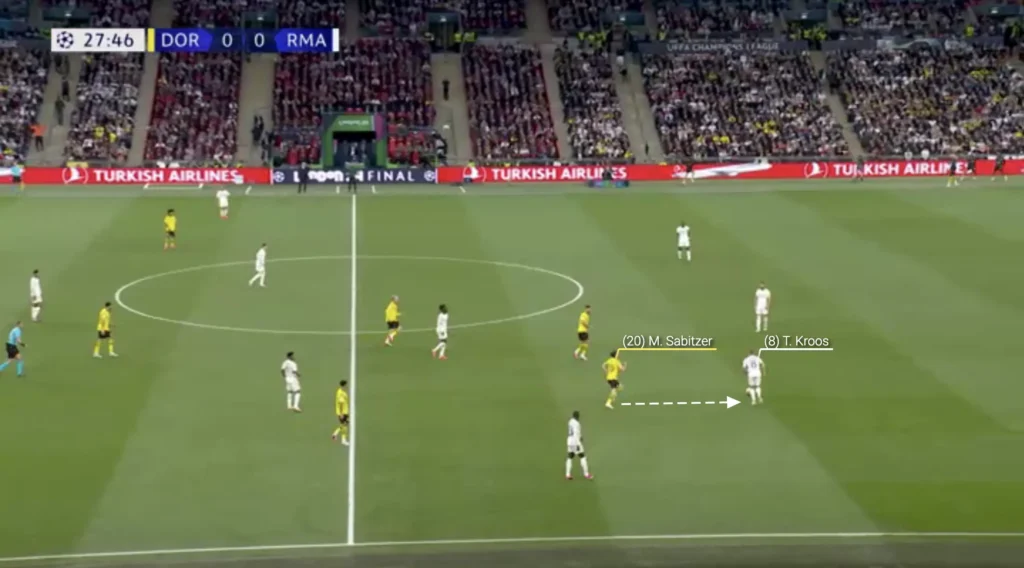
Attacking Transitions
Dortmund would counterattack in their offensive transitions. They did this with a high tempo, trying to attack the spaces between the center-backs and fullbacks. Their quick forwards, particularly Adeyemi, make them deadly in the counterattacks, constantly causing issues for opponents. Dortmund incorporated many players into their counterattacks and should have capitalized more on some of these situations.
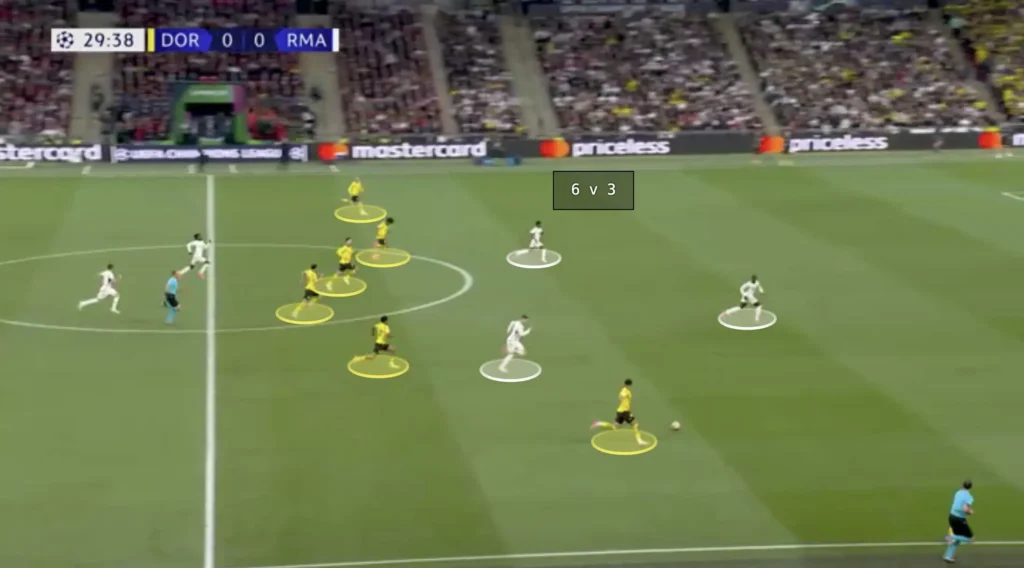
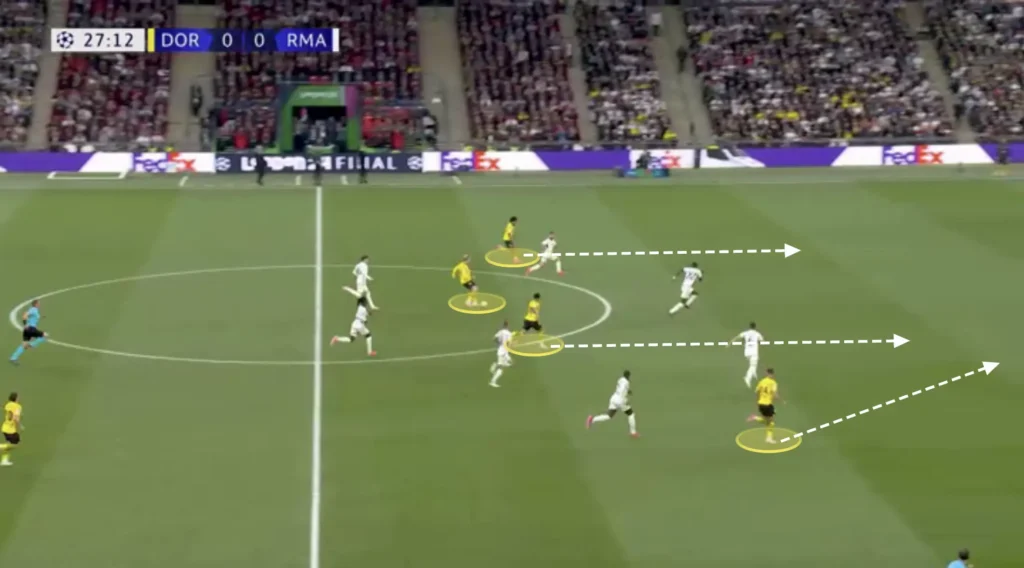
Dortmund Build-up
Low Build-up
In the low build-up, Dortmund used a 1-4-3-3 formation. Ryerson, Hummels, Shlotterbeck, and Maatsen made up the back four with Emre Can playing as the number-six and Sabitzer and Brandt as the two number-eights.
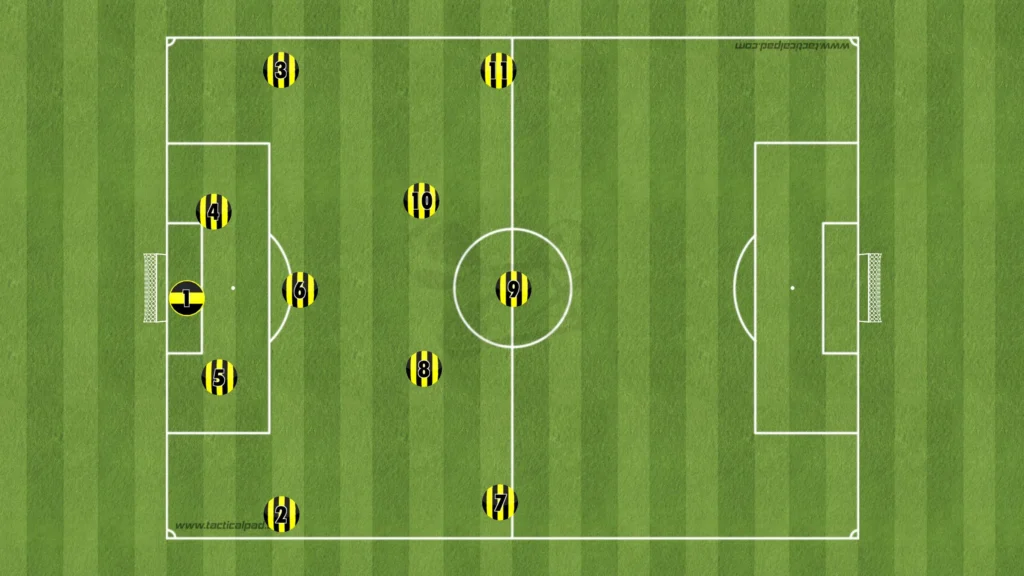
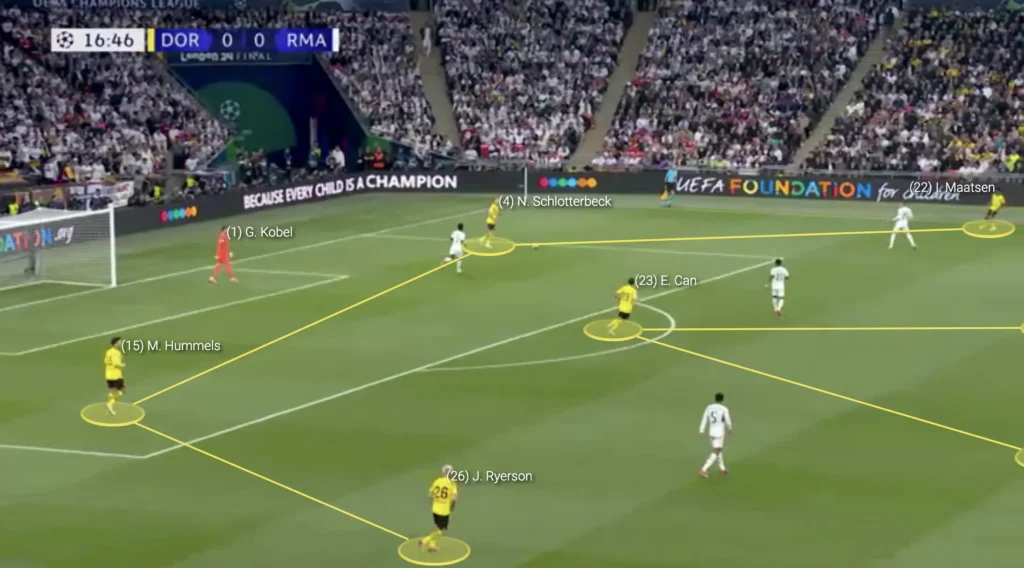
Real pressed Dortmund high when possible, especially in the second half, which led to Dortmund being more direct, trying to find Füllkrug with a long ball. Füllkrug often won the first ball and if he did not, Sabitzer and Brandt would be there to win the second ball.
High Build-up
Dortmund rotated into a 1-3-2-5 formation in the high build-up. Emre Can dropped into the backline while Maatsen came in as a holding midfielder playing next to Sabitzer. Ryerson pushed up as a right-winger with Sancho coming in as an attacking midfielder.
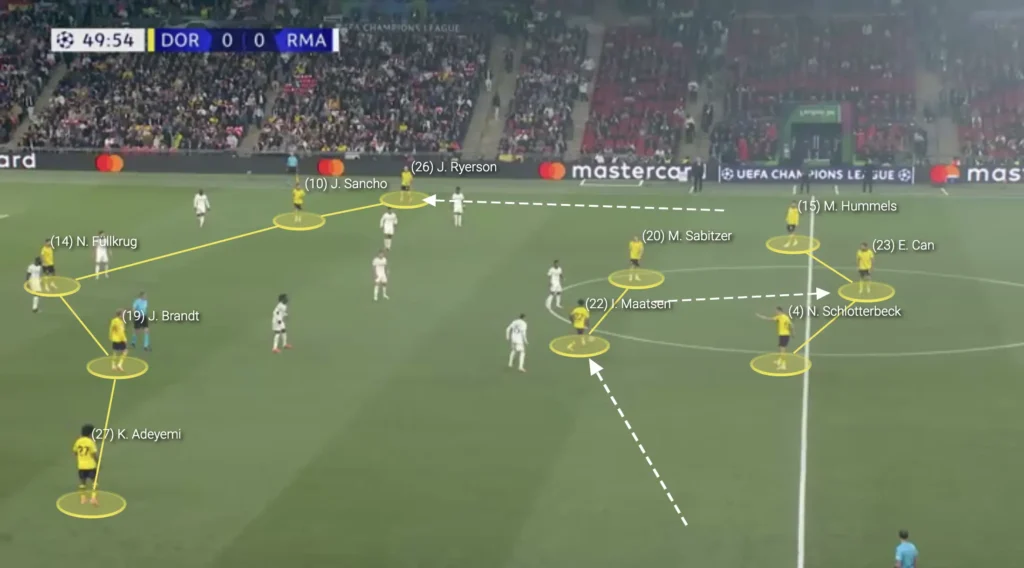
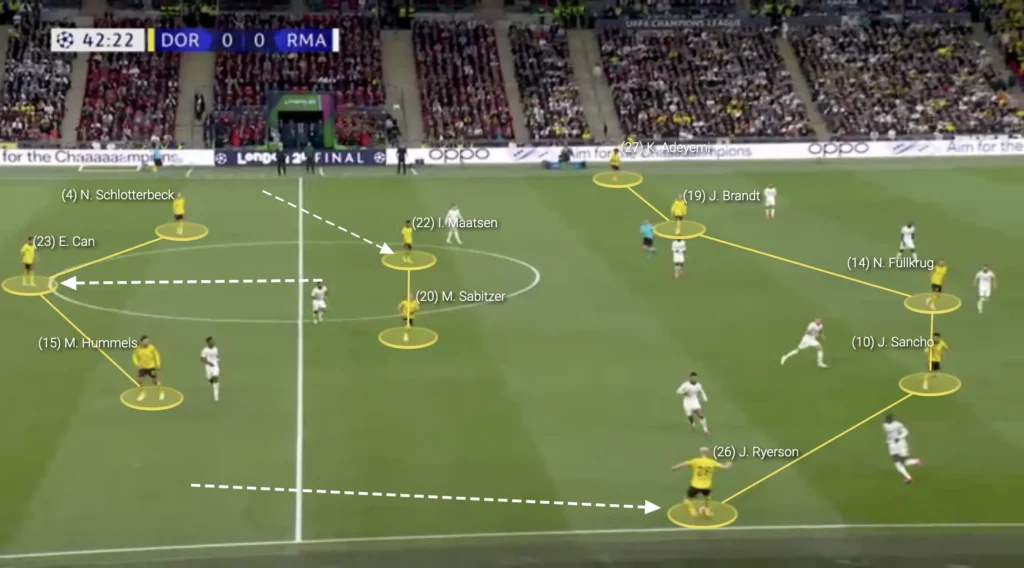
Dortmund mainly tried to punish Real with balls in behind the backline. The high Real backline was sometimes a bit late to react to the balls in behind, which enabled the Dortmund attackers to be first to the ball. Dortmund created many chances in the first half through this and could have scored one or two goals if they were more efficient.
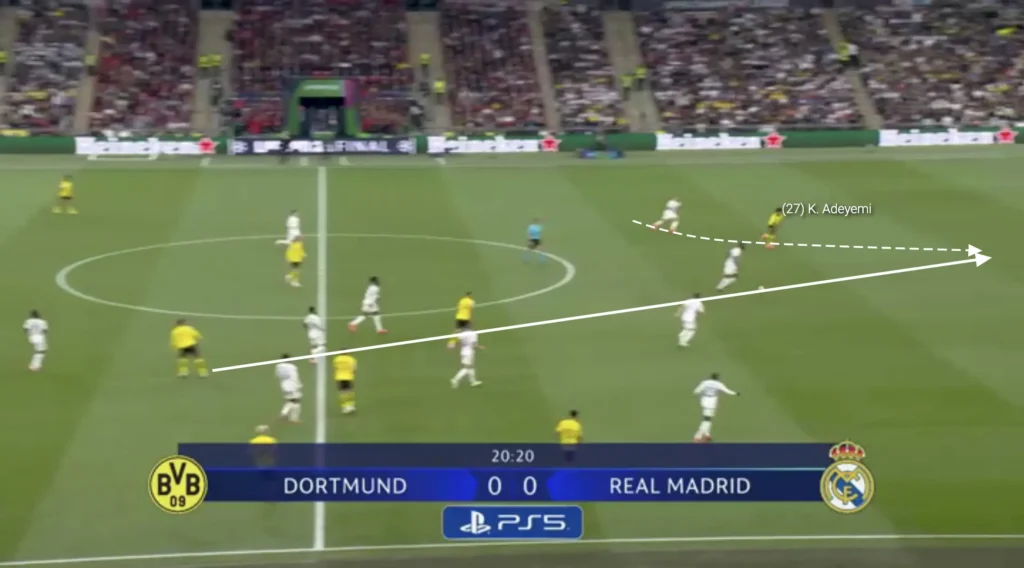
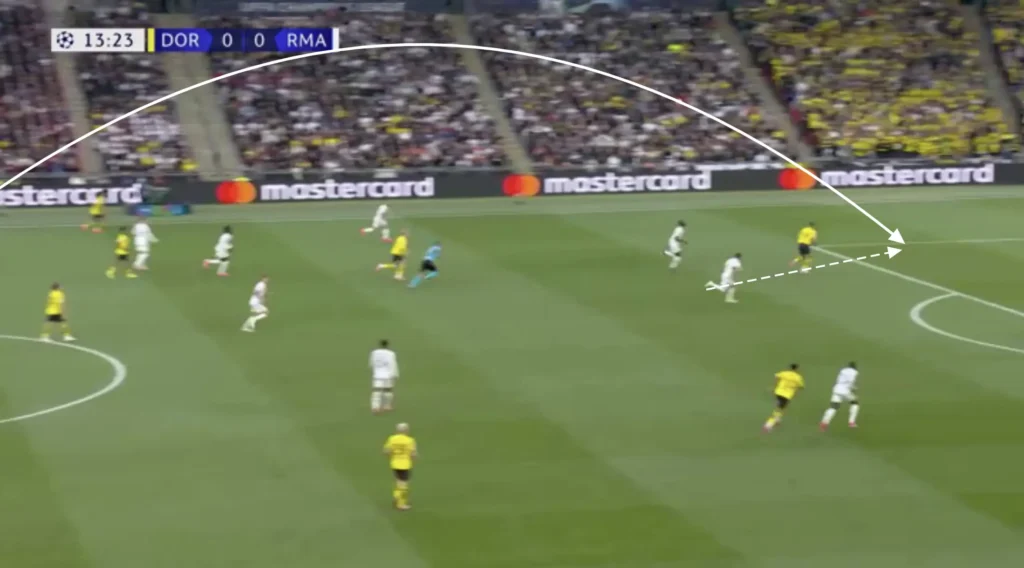
Real Madrid Defending
High Press
Real Madrid tried to press Dortmund high when possible and did so in a 1-4-1-3-2 formation.
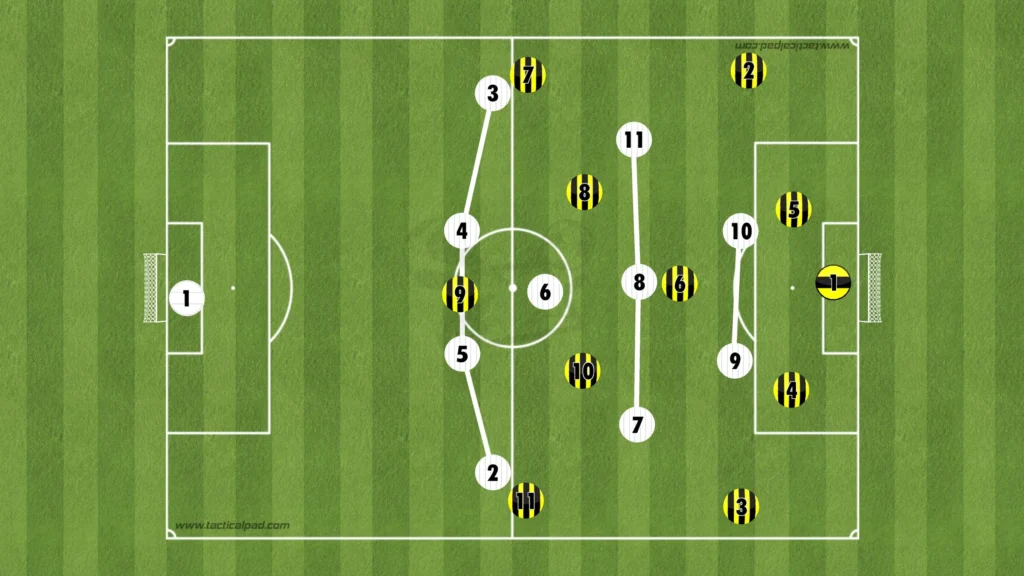
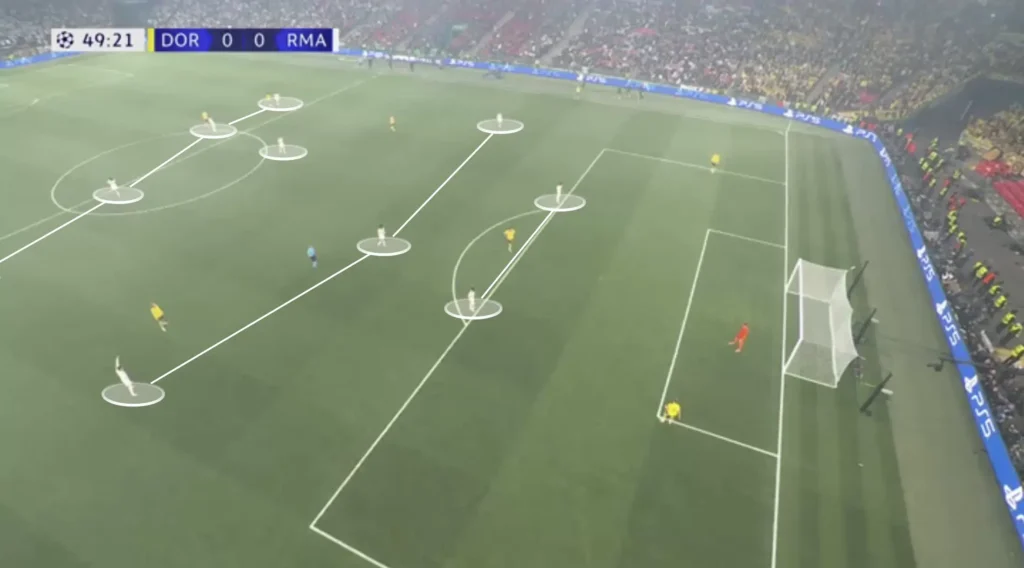
Dortmund used a 1-4-3-3 formation in the low build-up, which gave them an 8v6 (including the goalkeeper) numerical advantage low down against Real’s midfielders and forwards. This should allow them to find the open player and play through Real’s press. Ancelotti solved the numerical disadvantage by leaving Dortmund’s weak-side fullback open and going man-to-man on the rest of the players when the ball got played to one of the sides. The ball-side wide-midfielder pressured Dortmund’s ball-side fullback, the holding midfielder pushed over on Dortmund’s ball-side number-eight, and the weak-side wide-midfielder tucked in to control Dortmund’s weak-side number-eight.
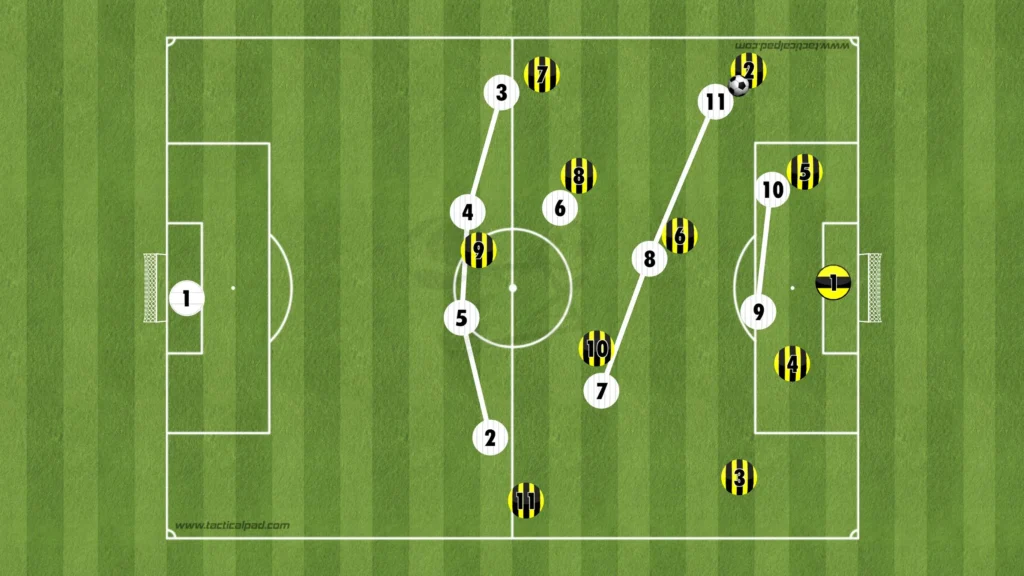
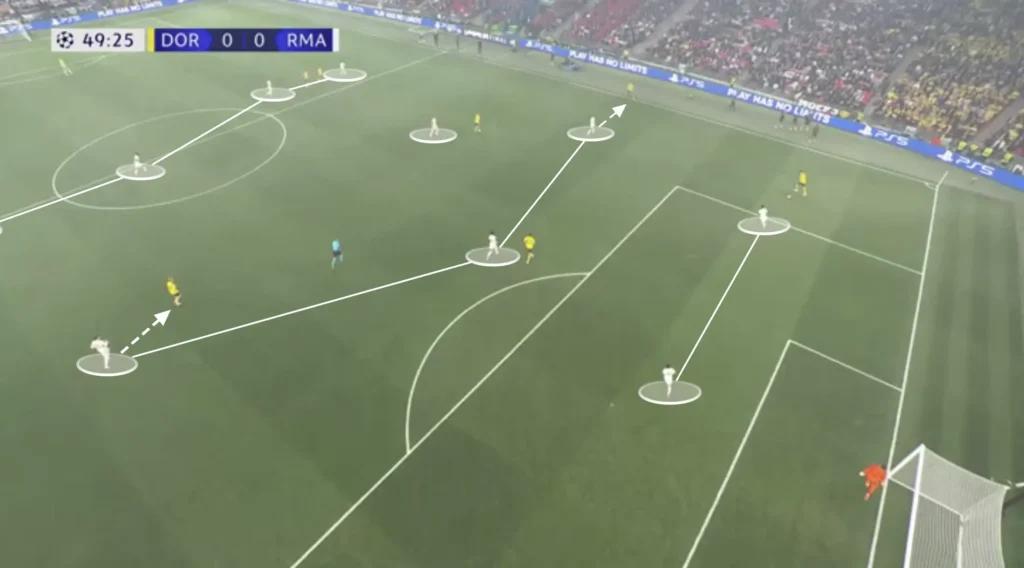
They can do this because the pass from one side to the other is too difficult for the ball-holder to make, and if he makes it, the Real players will have enough time to come across and win the ball. This system also gave Real a numerical advantage with the center-backs against the Dortmund striker, giving them more control when defending Dortmund’s long balls.
Low Press
Ancelotti’s Real Madrid used a 1-4-4-2 formation in the low press, with Rodrygo and Vinicius Junior playing as the strikers and Bellingham coming out as a left midfielder. They looked to set up in a mid-block, always trying to stay compact while closing the center, forcing Dortmund out wide.
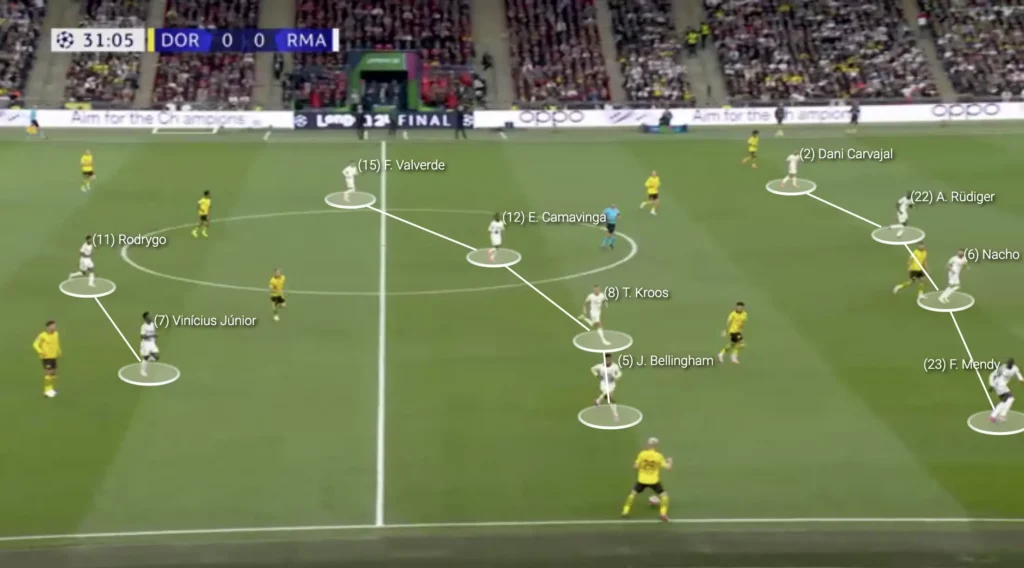
Final Thoughts
In conclusion, the Champions League Final 2023/2024 showcased a masterclass in tactical acumen from both competing teams. This analysis highlights the intricate strategies and adjustments that defined the match, from the high press and fluid formations to the precise execution of set pieces and transitions. Each team demonstrated a deep understanding of the game’s tactical nuances, reflecting the meticulous planning and adaptability of their respective managers.
The final was not just a testament to individual brilliance but also to the collective effort and strategic foresight that is required at the highest level of European football. The tactical battles, the shifts in momentum, and the key decisions all contributed to an unforgettable spectacle. As we reflect on this epic encounter, it is clear that the Champions League Final 2023/2024 between Dortmund and Real Madrid will be remembered for its strategic depth and the captivating chess match that unfolded on the grandest stage of club football.
